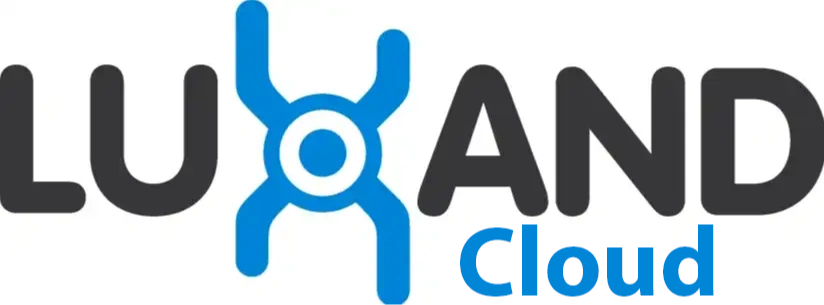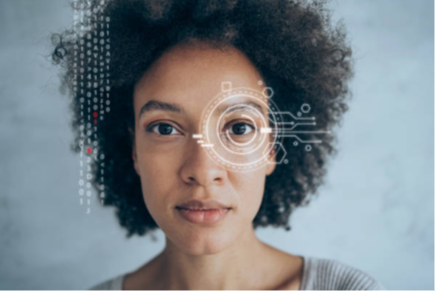
Everything You Need to Know About Microsoft Azure Face Recognition Technology
Facial recognition technology has emerged as a powerful tool for a myriad of applications, from enhancing security systems to streamlining user authentication processes. Among the leaders in this space is Microsoft Azure Face Recognition, a comprehensive service that leverages deep neural networks to deliver high accuracy and scalability for a wide range of use cases. However, while Azure offers robust capabilities, it’s essential to consider alternatives like Luxand.cloud, which provides distinct advantages in certain scenarios.
This blog post will delve into the intricacies of Microsoft Azure Face Recognition technology, exploring its features, benefits and cost. Additionally, we’ll highlight Luxand.cloud as a competitive alternative, showcasing its unique strengths and how it can serve as a cost-effective and efficient solution for your facial recognition needs. Whether you're an enterprise looking to implement large-scale facial recognition or a developer seeking the best tool for your project, understanding the options available will empower you to make an informed decision.
What is Microsoft Azure AI Face?

Microsoft Azure AI Face is a cutting-edge service within the Azure AI platform that provides advanced facial recognition capabilities. It is designed to identify and analyze human faces in images, offering a range of features from detecting and outlining faces to attributing emotions and even predicting demographics like age and gender.
Azure AI Face is known its robust machine learning models that have been trained on millions of images, ensuring high accuracy and reliability. It is not just about recognizing a face; it is about understanding the context. Azure excels in various challenging conditions, such as low lighting or partial occlusions, making it a versatile tool for developers.
Moreover, Microsoft Azure AI Face integrates seamlessly with other Azure services, creating a cohesive ecosystem that allows for the development of sophisticated applications. Whether it is for security, personalized customer experiences, or innovative marketing strategies, Azure provides a comprehensive solution that stands out for its ease of use and integration capabilities.
Key Components of Microsoft Azure AI Face
Let’s analyze the key components of Microsoft Azure AI Face and explore how they are revolutionizing the way we interact with technology.
Face Detection
Imagine you are at a smart home, and as you walk in, the security camera by the door scans the crowd. It picks out faces from the scene, regardless of the lighting or angle, and that is Azure Face Recognition’s face detection at work. It is the first step in recognizing that there is a human presence, which then triggers personalized settings – like your favorite music playlist starting to play.
Face Verification
Now, let’s say you are using a banking app that needs to verify that it is really you before granting access to sensitive financial data. You take a selfie, and Azure’s face verification compares it with the photo on file. Within seconds, you are authenticated, and it is all thanks to the technology's ability to match your live face with the one in the database, ensuring security and peace of mind.
Face Identification
At a bustling conference, organizers have a challenge: how to offer a smooth check-in experience. With Azure Face Identification, attendees simply walk up to a kiosk, their face is scanned, and they are instantly identified and checked in. This system can recognize individuals from a database of known faces, making it a seamless gateway to personalized attendee experiences.
Each of these components plays a pivotal role in creating a secure, efficient, and user-friendly environment, showcasing the versatility and power of Microsoft Azure AI Face.
How Does Microsoft Azure AI Face Work?
At its core, Microsoft Azure AI Face operates on sophisticated algorithms and machine learning models that have been trained to recognize and analyze human faces. Here is how it works:
Image Capture & preprocessing. The journey begins when an image or video frame containing human faces is captured and sent to the Azure cloud. The preprocessing step kicks in, adjusting for factors like varying light conditions, angles, and even obstructions. This ensures that the faces in the image are in the best possible state for recognition.
Face detection. Azure then employs advanced detection algorithms to locate faces within the image. The system discerns facial features with such accuracy that it can detect faces in a wide range of orientations — full-frontal, profile, and even up to 45 degrees of rotation.
Feature analysis. Once a face is detected, the real magic happens. Azure maps out facial landmarks – think of it as plotting the constellations on the landscape of a face. These landmarks are key to distinguishing one person from another. The system analyzes over 27 points on the face, including the eyes, nose, mouth, and the contour of the jawline.
Comparison & recognition. The analyzed facial features are then converted into mathematical representations, which Azure uses to compare against a database of known faces for verification or identification.
Outcome & application. The final step is the outcome, where Azure provides the results of the recognition process. Whether it is granting access to a secure location, personalizing a customer’s shopping experience, or tagging friends in social media photos, the applications are vast and varied.
Throughout this process, Azure maintains a commitment to privacy and ethical standards, ensuring that the use of facial recognition technology is responsible and respectful of individual rights.
Microsoft Azure AI Face Alternatives — Luxand.cloud Face Recognition API
When it comes to facial recognition technology, the market offers plenty of options, each with its own set of features and capabilities. In the upcoming section, we will compare two successful brands in the field: Microsoft Azure AI Face and Luxand.cloud Face Recognition API.
Key Features
When evaluating facial recognition services, it is important to consider the range of features they offer. Luxand.cloud provides a suite of facial recognition capabilities that specialize in real-time face detection and recognition, offering features such as age and gender recognition, emotion detection, and even the ability to detect facial features for augmented reality applications.
Microsoft Azure AI Face, while perhaps not as extensive in its feature set as Luxand.cloud, focuses on seamless integration with other Azure services.
Luxand.cloud Features
Let’s first examine Luxand.cloud’s features, where each functionality enhances user experience and opens up a variety of possibilities across various industries:
Face Detection: This is the first step in any facial recognition process, where the system identifies human faces within any digital image. For instance, a retail store could use this feature to count the number of visitors daily.
Face detection. Luxand.cloud's face detection API is a powerful tool that identifies and recognizes human faces within images and videos. It operates using advanced algorithms optimized for quick processing and high accuracy, even in challenging conditions such as varied lighting and different facial angles. Developers can integrate this API into their applications via simple API calls, enabling features like user authentication, security surveillance, and personalized marketing.
Face recognition. This feature recognizes the identified faces against a database of known individuals. Imagine a smart home system that recognizes family members and automatically adjusts the lighting and temperature to their preferences.
Face verification. This security feature confirms a person’s claimed identity by comparing their live face with a pre-registered image. A practical application could be in banking, where customers verify their identity through a mobile app for secure transactions.
Emotion detection. By analyzing facial expressions, this feature can infer a person’s emotional state. Marketing firms could use this to gauge audience reactions during product testing sessions.
Facial landmarks. This involves pinpointing key areas on a face, such as the eyes, nose, and mouth, which can be used for more personalized experiences. In the beauty tech industry, virtual makeup applications can use this feature to apply products realistically on a user’s face.
Liveness detection. To combat fraud, this feature determines if the face in front of the camera is real and not a photo or video. This is crucial for remote online exams, ensuring the registered student is the one taking the test.
Face cropping. Automatically extracts and crops faces from a larger image, which can be useful for creating ID cards without manual editing.
Face similarity. This measures how similar two faces are, which can be fun for finding celebrity look-alikes or even for genealogy services to discover family resemblances.
Each of these features not only showcases the technical prowess of Luxand.cloud but also demonstrates its practical applications in our daily lives, making tasks easier, more secure, and a lot more interesting.

Microsoft Azure AI Face Features
Azure’s suite of features is designed to cater to a variety of scenarios, emphasizing security, scalability, and integration, making it a robust choice for enterprises and developers alike.
Face detection. Azure’s face detection is adept at locating and framing human faces in images. Picture a smart security system at an airport, swiftly scanning through crowds to ensure safety and streamline passenger flow.
Face verification. This feature compares a captured image with a reference photo to confirm identity. Consider a scenario where a smartphone unlocks only when it recognizes the owner’s face, adding an extra layer of personal security.
Face identification. Unlike verification, identification searches for a known face within a database. A practical use case could be at events where organizers can quickly identify VIP guests for exclusive access or personalized greetings.
Judging from the above, Luxand.cloud offers a broader array of facial recognition-specific features, which can be particularly appealing for applications that require a high level of detail.
Performance Metrics
When it comes to the performance metrics of facial recognition technologies, two key factors are often highlighted: accuracy and speed.
Luxand.cloud Accuracy
Luxand.cloud delivers exceptional precision in real-world conditions, reliably detecting and recognizing faces across various lighting conditions and angles. This high accuracy is crucial for applications such as security systems where minimizing false positives is essential. Luxand.cloud's robustness in diverse scenarios ensures superior performance, especially in environments with inconsistent lighting and varied facial angles.
Luxand.cloud Speed
Luxand.cloud's algorithms are optimized for rapid processing, enabling near-instantaneous recognition. This quick response time is particularly beneficial for user authentication in access control systems, where speed enhances the user experience without compromising security. Luxand.cloud's focus on swift individual recognition tasks makes it highly effective in scenarios requiring immediate feedback.
Microsoft Azure AI Face Accuracy
Azure's face recognition features are built upon deep neural network models, providing high accuracy even with partial occlusions and varied expressions. However, Luxand.cloud's consistent performance in real-world conditions gives it a competitive edge.
Microsoft Azure AI Face Speed
Azure's service is designed to be fast and scalable, catering to enterprise-level needs where processing large volumes of data swiftly is necessary. This speed is beneficial for use cases such as real-time crowd analysis or quick identity checks in corporate environments. Nonetheless, Luxand.cloud's emphasis on speed for individual recognition tasks ensures faster and more efficient performance in situations requiring immediate results.
In summary, Luxand.cloud's superior accuracy in various real-world conditions and its optimization for rapid, individual face recognition make it a more effective solution compared to Microsoft Azure AI Face. While Azure offers strong performance for large-scale, enterprise-level applications, Luxand.cloud's focus on minimizing false positives and providing near-instantaneous recognition makes it the better choice for security, access control, and other applications where precision and speed are paramount.
Scalability and Integration
Scalability and integration are crucial aspects of any cloud-based service. Here is how Luxand.cloud and Microsoft Azure AI Face stand out in these areas:
Scalability
Luxand.cloud is expertly designed to efficiently manage a growing workload, leveraging a dynamic cloud infrastructure that scales in response to increasing demand. This makes it ideal for businesses with variable workloads. For instance, a retail chain can deploy Luxand’s technology across multiple stores, ensuring consistent performance even during peak shopping seasons. In comparison, while Microsoft Azure AI Face also offers robust scalability through its global network of managed data centers, Luxand.cloud's approach provides a more streamlined and adaptive scaling solution specifically tailored to businesses experiencing fluctuating demands.
Integration
Luxand.cloud provides APIs that are exceptionally easy to integrate with existing applications, offering unmatched flexibility. This allows developers to seamlessly embed facial recognition into a wide range of software solutions, from mobile apps for personal use to complex systems for surveillance or marketing analytics. Although Microsoft Azure AI Face emphasizes integration with other Azure services and third-party applications, Luxand.cloud's straightforward and versatile APIs make it a more attractive option for developers looking for hassle-free integration into diverse technological ecosystems.
While Microsoft Azure AI Face offers solid scalability and integration within its extensive service ecosystem, Luxand.cloud stands out with its efficient, dynamic scalability and easy-to-integrate APIs. This makes Luxand.cloud a superior choice for businesses and developers seeking a flexible, high-performing facial recognition solution capable of adapting to varying demands and seamlessly integrating into a wide array of applications.
Cost Comparison
Here is a general overview of the cost comparison between Luxand.cloud and Microsoft Azure Face Recognition.
Luxand.cloud Cost
Luxand.cloud offers a tiered pricing model that is particularly advantageous for both small-scale applications and large-scale operations. It begins with a free tier (14-day free trial period) with limited functionality, which is ideal for development and testing purposes. For more extensive use, their pricing scales with the volume of facial recognition requests:
$19/month for 10,000 API requests
$99/month for 200,000 API requests
For enterprises requiring high-volume usage, Luxand.cloud provides custom pricing, ensuring that costs remain manageable as usage increases. This flexibility allows businesses to scale their operations without facing unexpectedly high costs, making Luxand.cloud an affordable solution as they grow.
Microsoft Azure AI Face Cost
Microsoft Azure Face Recognition also uses a pay-as-you-go pricing model with a free tier (20 free TPS - transactions per minute) for a certain number of transactions per month. For enterprise-level services, Azure’s pricing is based on the number of API calls and data processed. The Standard tariff operates on a decremental approach:
0-1M transactions: $1 per 1,000 transactions
1-5M transactions: $0.80 per 1,000 transactions
While this pricing model can reduce costs with higher transaction volumes, it can still become expensive for businesses with fluctuating or unpredictable workloads. Reserved capacity pricing options are available for predictable workloads, but these can lock businesses into certain usage patterns, which might not always align with their needs.
Cost Efficiency
Luxand.cloud's tiered pricing structure is designed to be both flexible and predictable, allowing businesses to scale up without unexpected costs. The availability of custom pricing for high-volume users further enhances its cost-effectiveness, ensuring that businesses only pay for what they need.
Luxand.cloud offers a more cost-effective solution compared to Microsoft Azure Face Recognition, particularly for businesses that need flexibility and predictable pricing as they scale. Its tiered pricing model and custom options for high-volume users make it a financially savvy choice for both small and large-scale applications, ensuring that businesses can manage their expenses effectively while growing their operations.
Learn more here: Face Recognition API: Luxand.cloud vs Microsoft Azure Face API
Conclusion
When selecting a facial recognition API, the decision depends on the specific needs and goals of the project. Luxand.cloud offers a suite of features that are well-suited for applications requiring a broad range of facial recognition capabilities, such as age and emotion detection. Its flexible scalability and ease of integration make it an attractive option for both startups and established enterprises.
On the other hand, Microsoft Azure Face Recognition provides a robust and secure solution that integrates seamlessly within the Azure ecosystem, offering a high level of reliability and compliance with corporate standards. This makes it attractive for organizations embedded in the Azure infrastructure.
While both services offer their unique strengths, for projects where a diverse set of features and ease of integration take precedence, Luxand.cloud’s Face Recognition API is a particularly advantageous choice. Its performance and adaptability not only meet but exceed the demands of a variety of facial recognition applications, making it a discerning option for those looking to leverage the cutting-edge capabilities of facial recognition technology.
